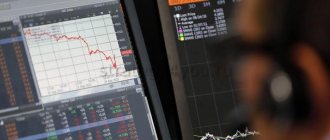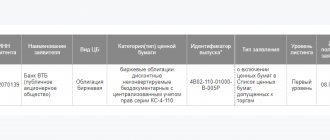The stock market has recently become increasingly popular among investors. It offers a large selection of stocks in which you can invest. However, not everyone knows that investing in stocks is not easy and quite risky. In this article, we will explain to you what stocks are, what types they are and how you can earn income from them.
What are shares
A share is a security that confirms the investor's right to a share in the company's business. If the company shows positive financial results, then the investor may have the opportunity to receive dividends on the shares. However, the final decision on the payment of dividends is made by the general meeting of shareholders. You can also count on income from the resale of a security. For example, you initially bought a paper for $10, then it increased in price, and its market price was already $12. If you sold the paper that went up in price, you would earn $2 on it.
How to analyze them
All analytics related to securities prices are divided into two types:
- fundamental analysis;
- technical analysis.
The first type seeks to answer the question of how to determine the fair price of a stock by considering real factors. They are helped in this by company reporting, industry research, and rating agencies.
The second type of analysis focuses on market price movements. That is, using a technical approach, traders try to find patterns in the past behavior of quotes and apply this knowledge in future trading.
How are shares structured?
Companies list shares on the stock exchange to raise capital. When issuing securities, a joint stock company announces the price at which investors can purchase their shares on the stock exchange. At the same time, stock market participants buy the first shares from the enterprise itself. After this, they will be able to resell these shares on the exchange to other participants. At this stage, the cost of one share may be several times higher than the initial one, but first of all, everything depends on the state of affairs in the company.
Where to learn composition
- On one's own. Studying examples of the formation of portfolios of large players in the investment market (Management companies of VTB, Sberbank, etc.). Study the training materials of the Moscow Exchange School. On the website, select the topic “Investments”. There are both paid and free courses of various forms (videos, webinars).
- On traders' communication sites. For example, Smart-lab or Finam's Comon trading community. The latter publishes trading strategies and principles for creating investor cases, which you can subscribe to and follow.
Each strategy has a profitability calculator over a period of time.
What types of promotions are there?
Shares are divided into two types:
- Ordinary. Give the investor the right to vote at the shareholders meeting. Such shares do not guarantee the payment of dividends, but provide an opportunity to claim them. It is important to know that common stocks are among the riskiest securities. This is because if the business is liquidated, holders of common stock will be able to claim a refund after payments to holders of preferred stock and bonds.
- Privileged. Preferred shares typically pay higher dividends, but their owners have no voting rights. At the same time, holders of preferred shares have priority in the event of bankruptcy of the issuer.
In turn, preferred shares are divided into:
- Non-cumulative.
- Unconverted. The status of such shares cannot be changed.
- With a share of participation. Such shares provide the investor with the opportunity to receive additional dividends.
Where can I buy shares
You can purchase shares on the stock exchange. It trades in various securities: shares of mutual investment funds, OFZ (federal loan bonds), as well as shares, etc. To carry out transactions on the stock exchange, you need a broker or trustee. They act as intermediaries between the investor and the exchange. It is also important to remember that trading on the stock exchange carries certain risks. You may lose some or all of your capital. Do not forget that even if a trustee acts on your behalf, you still bear the risks. Capital loss mainly occurs due to falling stock prices. For example, negative market events may adversely affect the value of securities and they may fall in value. Conversely, for example, news of a dividend increase can raise the price of securities. Let's take a closer look at why stocks rise and fall.
Types of portfolio
The higher return possible comes from higher risk. This is the basic approach to classification. In many ways it is conditional. Over a given period of time, a conservative portfolio can achieve higher returns than a portfolio of stocks. But in general, the patterns remain the same over a long period of time.
Conservative
A standard conservative portfolio includes bonds of the state, large structures with public and private participation. Eurobonds and OFZs are the most popular instruments for inclusion.
An example is the Eurobond fund of Sberbank Asset Management. The structure of the fund and the dynamics of changes in the share price (source - the manager’s website).
Balanced
Average risk with possible average return. Standard - includes shares and conservative assets (bonds, Eurobonds) in various proportions by economic sector.
Example - “Sberbank – Balanced Fund”.
Aggressive
It is formed mainly from shares of varying degrees of risk. From blue chips to third tier. In the latter case, the risk is off the charts, but the profitability is also maximum.
An example of an asset involving blue chips and first-tier shares is shares of the Dobrynya Nikitich fund of Sberbank.
Why is the stock price rising?
It is impossible to accurately predict changes in stock prices. We tried to highlight the key factors influencing quotes:
- Business expansion. Companies are expanding their presence in the market, entering new regions and countries, launching new factories, etc. – all this indicates the company’s development in an optimistic manner. Therefore, against the backdrop of such news, the value of the company’s shares may rise quite well.
- Industry prospects. If a particular industry prospers, the demand for shares of companies within this market segment also grows. Therefore, the stock price rises. For example, the high-tech and solar energy sectors are now considered promising - shares of such companies, as a rule, are traded at fairly high prices. For example, one Tesla share costs about $400.
- News about dividend payments. When companies announce their intention to pay a portion of their profits to shareholders, their stock prices can literally skyrocket. For example, in May 2022, Rosseti shares increased by 15% after the announcement of payments.
- Share repurchase. Companies can buy back their securities to solve various problems: investing free money, reducing the risk of hostile takeovers, changing the capital structure, improving the ratio of profit to share price. Typically, buybacks support stock prices.
- Legal regulation. For example, many countries are now actively struggling with exhaust gases, global warming and other related problems. In this regard, for example, the alternative energy market is growing, and following this, the shares of the corresponding companies are growing.
Securities. Dividend. Share price
Let's move on to consider the capital represented in securities. Its emergence and circulation are closely related to the functioning of the real asset market, i.e. the market in which the movement of material resources occurs. But, being a reflection of real capital, stock assets (securities) acquire an independent life.
To illustrate this more clearly, let's look at an example. You are the owner of shares in RAO Gazprom. The par value of one share is 10 rubles. But on the market it is sold for, say, 500 rubles, although this share is backed by Gazprom property, which is valued at much more. But the stock price is determined not only by the size of the property, but also by other factors (demand and supply for these shares, the financial situation of the enterprise, the company's policy regarding dividends, political events in the country, etc.).
Types of securities. In general, securities
represent titles of property, i.e. those legal documents that indicate their owner's right to income or property. From the point of view of the owner, securities are classified into:
1) bearer securities.
To exercise and confirm rights here, a simple presentation of a security is sufficient. Such securities prevail in Germany, Switzerland, and Spain. In Russia, these are government savings loan bonds. In accordance with the Law “On Joint Stock Companies”, joint stock companies are also allowed to issue bearer bonds.
2) registered securities.
Here, the rights to these papers are confirmed based on the name of the owner entered in the text of the paper and entries in the register of shareholders (these are registered shares, bonds, certificates). In Russia, shares are only registered. Bonds can be either registered or bearer. Registered securities predominate in the USA, Great Britain, Italy, and Japan.
3) order securities.
Here the rights are confirmed by the bearer and the presence of transfer signatures (this is primarily a bill of exchange).
Let's consider two types of securities: bonds and shares.
Bond -
It is a debt obligation for a specified period. The bonds receive income (quarterly, annual, with a variable or constant coupon (interest income) or in the form of a discount). Income can be either fixed or floating (depending, for example, on the yield on the government short-term bond market). All bonds have a nominal price (par value). It is needed to calculate income and determine the market price. The market price is usually expressed as a percentage of the face value. For example, the par value of a bond is 1000 rubles, the selling price is 1200 rubles.
.
The initial placement of bonds can be carried out below par, i.e. at a discount, with a discount.
When a bond is redeemed at par, its owner receives income in the form of a discount, the difference between the par and the purchase price of the bonds.
Bonds can be state, regional, municipal and corporate. In Russia, government bonds have received the greatest development (state short-term bonds - GKOs, federal loan bonds - OFZ and state savings loan bonds - OGSS).
Although, by law, joint stock companies have the right to issue their bonds, these cases are extremely rare in Russia.
Bonds are also:
— convertible,
those. exchangeable for shares under certain conditions;
— revocable,
which can be repaid early;
— secured and unsecured bonds,
etc.
Let's move on to looking at stocks.
Promotion -
This is a security without a specified circulation period, indicating the contribution of funds to the authorized capital of a joint-stock company, giving its owner the right to receive profit in the form of a dividend and to participate in management. Thus, in understanding a stock, it is important to highlight three fundamental properties:
1) this is the title of ownership of the company’s property (this is not a loan);
2) the stock does not have an expiration date (for bonds it is predetermined);
3) limited liability. An investor cannot lose more than he invested in the stock. The investor is not liable for the obligations of the company as a whole. According to Russian legislation, all shares have a par value. The US and some other countries allow shares to be issued without a par value.
ordinary and preferred shares
The difference is that the dividend amount is fixed in advance for preferred shares, but not for ordinary shares. Owners of ordinary shares have the right to participate in the general meeting of shareholders with the right to vote on all issues within its competence, but the owner of preferred shares does not, except when it comes to issues affecting the interests of the owners of these shares.
The Law “On Joint Stock Companies” in Russia provides (this is also in practice in the USA) two voting systems for shareholders when choosing the Board of Directors of the company: statutory
and
cumulative.
The first principle applies: “1 vote - 1 share per director.” For example, if 10 directors are elected and a shareholder owns 10,000 shares, then he must cast his 10,000 votes first for 1 director, then the next 10,000 votes for another, etc. until the list is exhausted.
Under the cumulative system, a shareholder has 100,000 votes (1 vote x 10,000 shares x 10 votes). And he can distribute them according to the number of members of the Board of Directors at his discretion or give 100,000 votes to one candidate.
Dividend. In Russian joint-stock companies with more than 1000 shareholders. a cumulative voting system is provided. In principle, this system is more beneficial for small shareholders. The income received from shares is called dividend.
A joint stock company has the right to pay dividends once every quarter, six months or year. Their source is net profit or special funds for preferred shares.
The decision on the payment of annual dividends is made by the general meeting of shareholders, but their amount cannot be greater than that recommended by the Board of Directors of the company.
The General Meeting has the right to decide on the non-payment of dividends on shares of certain types, as well as on the payment of dividends in full on preferred shares, the dividend amount for which is determined in the charter.
Selection of securities.
When investing in securities, there are usually 4 goals: safety, profitability, growth and liquidity.
Safety -
The main thing here is minimal risk, the investor’s invulnerability from market shocks. The safest investment is in government securities. Minimal risk, but also minimal profitability.
Profitability.
There is always a great temptation to choose the option that promises the highest profitability. But there is an ironclad rule of market economics: the options that offer the highest expected return also involve the greatest risk. There are many sad examples of this in Russia.
Investment growth.
Typically, shares of fast-growing companies pay small dividends, but their stock prices rise quickly.
Liquidity,
or the marketability of securities is their rapid and harmless conversion into money for the holder of securities.
No security has all of the listed properties. Therefore, a compromise is inevitable. The main task when forming a securities portfolio is to find an acceptable combination of risk and return. One of the methods to reduce risk is diversification
portfolio, i.e. the acquisition of a certain number of different securities, as a result of which low income on some securities can be offset by high income on others. The optimal number of types of securities in an investor's portfolio is from 8 to 20 types.
When choosing ordinary shares, pay attention to the following factors:
1) material and technical base of the enterprise (age of equipment, its technical condition, construction progress, reserves);
2) type of production (capital-intensive, labor-intensive, material-intensive, knowledge-intensive);
3) degree of diversification of production. Multidisciplinary production is always more stable;
4) financial condition of the enterprise;
5) development prospects, presence of competitors, international economic relations.
Share price. Share price -
this is the market price of the shares. Classically it is defined like this:
.
For example, if a joint stock company pays a dividend of 5,000 rubles. for 1 share with a par value of 1000 rubles, the interest rate on deposits in Sberbank or a commercial bank is 50% per annum, then the market price of the share is 10,000 rubles.
The market price of shares is used not only to determine the profitability of investing in shares, but also to determine the value of the enterprise. This method (although not the only one) is used in countries with a developed stock market. The market capitalization indicator of an enterprise (share price multiplied by the number of shares) is used in comparative analyzes of the scale of enterprises.
The stock market is divided into primary (sale of new issues of securities to their primary owners) and secondary (their subsequent resale).
The secondary market exists in the form of exchange turnover (purchase and sale of securities on the exchange) and over-the-counter (purchase and sale outside the exchange by directly agreeing on the terms of the transaction between the seller and the buyer). In Russia, unlike Western countries, the bulk of transactions for the purchase and sale of corporate shares are still carried out outside of exchanges.
Why are stocks falling in price?
Sometimes, if you buy a stock when it's falling, you can make good money on it in the future if it rises in price again. However, it is important to understand that in practice this does not always happen: shares may fall in price for a long time and not recover.
- Economic component. Due to the crisis associated with the spread of the new coronavirus infection, many stocks have fallen in price. For example, the closure of borders led to a decline in the value of shares of companies in the aviation sector.
- Force majeure situations. The larger the accident, the more it can affect the stock price. For example, after the fuel spill in July 2022 (a subsidiary of Norilsk Nickel), the company’s shares fell.
- Declining sales. If a company stops developing or becomes uncompetitive in the market, then there is a high probability that the shares of such a company will no longer be so attractive to investors.
Who can you ask to help pack your briefcase and who can’t?
It is not advisable to involve brokers to create portfolios. Each broker has his own narrow interests in the market. Large brokerage companies are market makers for certain issuers. Or they hold large blocks of shares. Of course, they are interested in attracting clients' money to these assets. First of all.
The best option is to contact independent specialists with a diploma from the Federal Financial Markets Service, confirming their professionalism. The diploma is issued by accredited companies. The register is maintained and regulated by the Central Bank of the Russian Federation.
The diploma must be at least level 1. The information is posted on the Central Bank website. Before contacting your chosen specialist, read reviews about him. Or ask for other information confirming his qualifications.
Risks associated with purchasing shares
Any activity involves risk, investing is no exception. Typically, the higher the desired return, the higher the risk. The main risks associated with purchasing shares can be divided into:
- Market risk. This is the downside and upside risk of stock prices. We have already discussed in detail why stocks can rise and fall in price.
- Liquidity risk. If you can sell a security quickly and profitably, then it is considered liquid. The market offers shares whose liquidity is close to 100% (for example, blue chip shares). By investing in shares of such companies, you can sell them on the stock exchange at a price close to the market price. Conversely, if the stock is not liquid, then you risk turning your investment into cash and losing part of your invested capital.
- Credit risk. There is a risk of bankruptcy of the issuer of the security. In such a situation, your securities will lose value. The good news is that you will be able to claim a share of the company’s property after the bankruptcy procedure is completed.
Requirements for issuers.
To begin issuing shares, the issuer must meet certain criteria, which include:
- The size of the authorized capital (set based on economic activity).
- Legal status (only joint stock companies can issue shares)
- Income level (to ensure shareholders receive income)
- Reliability (no one will buy shares of a company that conducts unclear activities and has only recently been operating).
- Direction of activity (it must be justified and legal, non-risky).
Before buying shares, you need to study the following points:
- Financial indicators. Many companies publish their quarterly or annual financial reports in the public domain. Here you can view statements for several periods to understand how the issuer operates, whether there is income or whether it is incurring losses. It is difficult to understand the reporting, so you can also read the audit reports. If the performance is good, then the price of the shares will rise, and their owner will be able to earn income.
- Profitability for previous periods. If shares are purchased for the purpose of receiving dividend income, then you need to analyze past returns. Information about this is also published in specialized publications or in the news. If the former owners have not received anything for several years, then it is better not to hope for a “miracle”. The volumes of dividends paid are also indicated on the official website of the issuing organization.
- Financial condition. Here you can assess what the company’s turnover is, what the volume of receivables and payables is. If the issuer has large current debts, then most likely it will use the profit received to pay them off. Audit reports also provide an assessment of the financial condition.
Tips for buying shares
- You don't need to spend all your savings buying stocks. Remember that you should always have a cushion in case of unexpected expenses.
- Word of mouth does not work in your favor. An artificial hype may be created around the company's shares. Accordingly, the value of such a stock may rise significantly in price. But in most cases, after the hype subsides, the value of the security falls.
- Diversify your investments. Make sure that your capital is distributed between shares from different segments of the economy and countries. If one sector of economic activity tanks, your shares in that sector will decline in value. However, with a properly diversified portfolio, your loss can be offset by shares of another segment of the business.
- Follow the news and analytics. You can find many useful selections and recommendations in investment applications or on the broker's website. Also follow the news feed. Based on the information received, you can make a decision about investing in a particular company. However, remember that only you are responsible for your decision, and no one can give a 100% guarantee regarding any forecast.
Portfolio optimization methods
Some approaches when working with a stock portfolio.
Diversification
- Purchasing shares in a portfolio of different sectors of the economy.
- A set of at least 8–10 investment instruments.
Placement in different depositories and brokers
The client himself has the right to decide in which depository to store the shares. The broker offers its own option by default. If the trader is not satisfied with this option, he can agree to store the securities in another depository. Some brokers maintain their own licensed depositories. However, they do not charge a fee for storing it.
A brokerage company and a depository are different types of activities. The broker may cease operations, the shares will remain in the depository.
Forming a case of securities through different brokers is also part of risk diversification. But it is more relevant for speculators. For an investor, it is important to know in which depository his securities are stored.
What to remember
- By purchasing a share, you become a co-owner of the business.
- There are two types of shares: ordinary and preferred. When purchasing preferred shares, you are entitled to dividends. If you invest in common stock, you are given the right to vote on matters relating to the internal affairs of the company.
- You should remember that investing in shares carries the risk of loss of capital.
- You can buy shares on the stock market. To do this, you need a reliable broker with a stable history of presence on the market.
- If you decide to invest in stocks, remember the basic rules of investing: diversify your portfolio, follow news and analytics, create a “safety cushion” and do not react to panic around stocks.
- #Stock
- #Tips for beginners
Was the article helpful?
Thanks for the answer!











